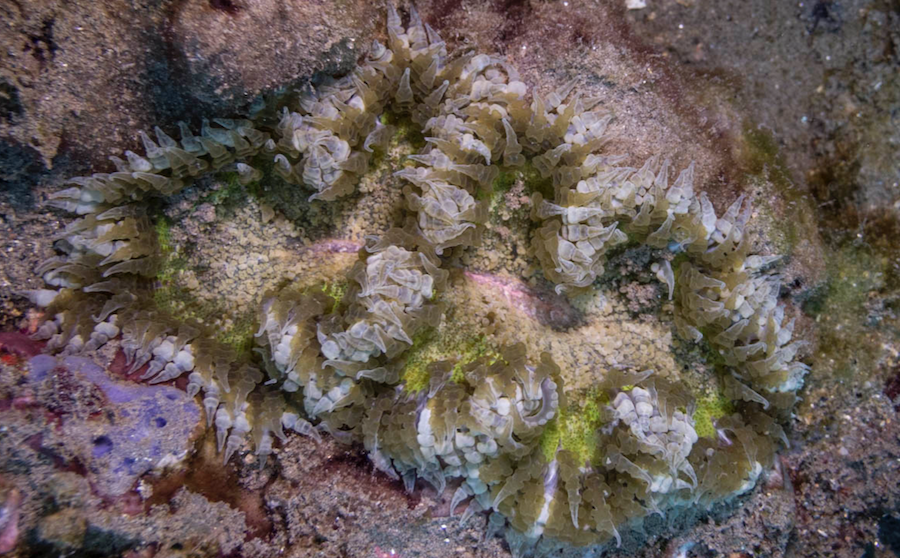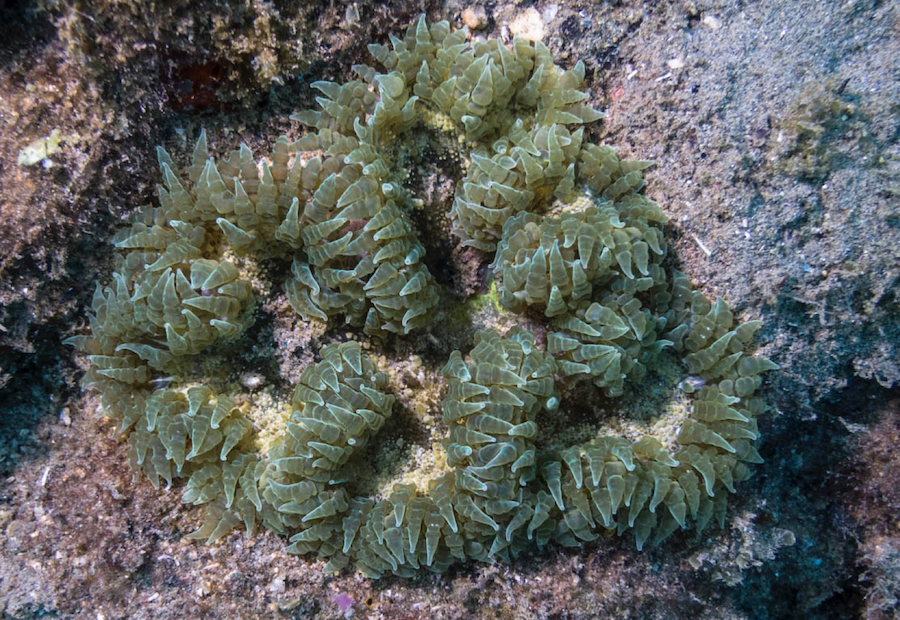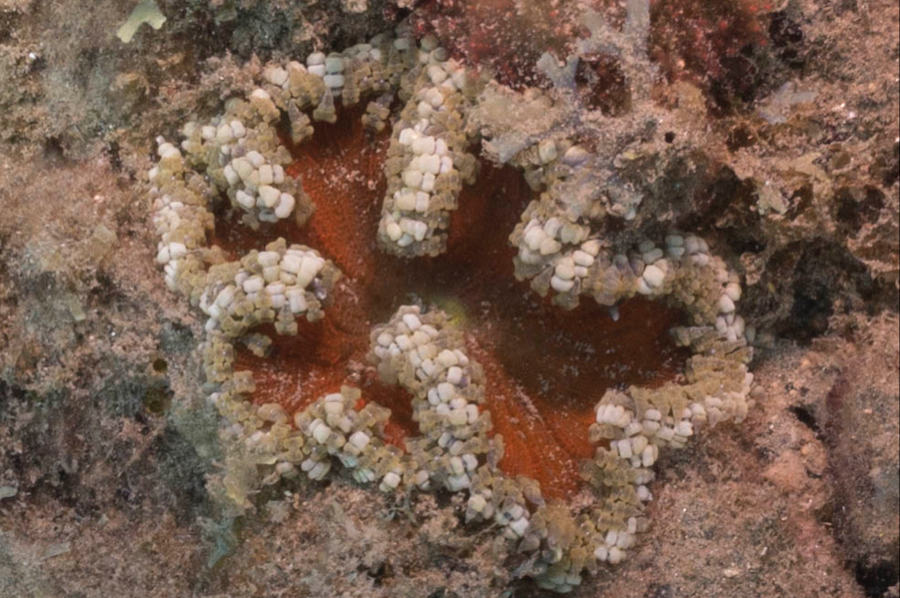Anemones are iconic marine organisms that have long captured the imagination of saltwater aquarium hobbyists. Unfortunately, many of these iconic critters are poorly suited to life in the average home aquarium. Even those that are generally considered good aquarium candidates, such as the popular bubble-tip anemone (Entacmaea quadricolor), are still demanding in terms of their physical environment and must be placed in a system designed around their specific needs and behaviors.
The good news is, hobbyists who are seeking a beautiful but more accommodating anemone species can find what they’re after in the flower anemone, aka rock flower anemone (Phymanthus crucifer*). This Caribbean denizen is very hardy and tolerates a fairly wide range of aquarium conditions, making it a good choice for reefkeepers of virtually all experience levels, even beginners.
Physical appearance
At first glance, P. crucifer could be mistaken for an especially gorgeous type of mushroom anemone. The tentacles, which surround the margin of the oral disc, can be smooth but are often beaded or ridged. In fact, “beaded anemone” is another common name applied to this species. Possible colors range from uniform tan, green, orange, or creamy white to surprisingly flamboyant, rainbow-like combinations of different colors and hues on the same specimen. Size-wise this anemone is commonly sold at just a few inches in diameter. It can reach upwards of six inches in diameter, but most specimens I’ve seen or kept have been somewhere in the three- to four-inch range.
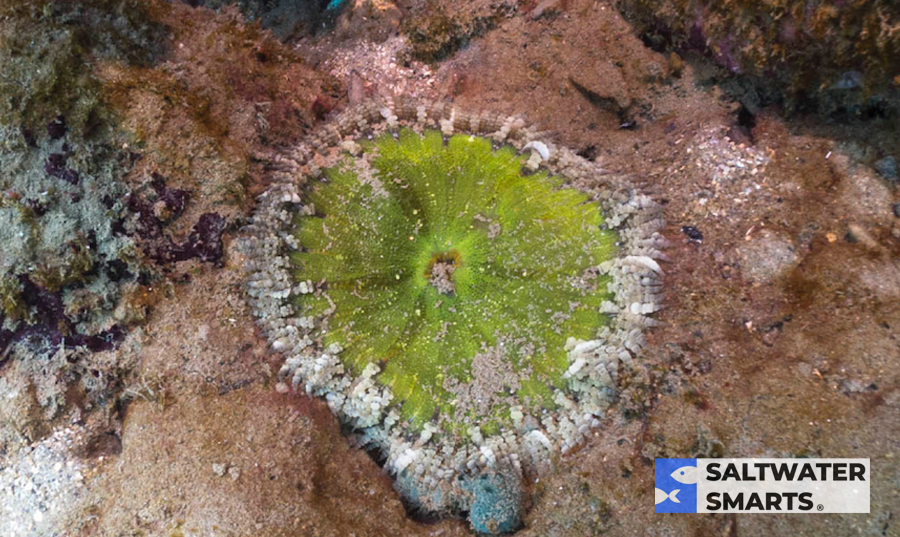
Aquarium conditions
P. crucifer can thrive under a relatively wide range of lighting and water-flow intensities. While reef-quality water conditions must be provided, this anemone is reasonably forgiving with respect to dissolved nutrient levels and modest fluctuations in water parameters (emphasis on “reasonably forgiving”—they won’t thrive on neglect). As far as tank size is concerned, just about anything goes. Being small, hardy, and often visually stunning, this anemone has become a popular choice among nano aquarium keepers, but it can also be a great addition to larger systems, especially if multiple specimens are introduced to create the effect of a flower anemone garden.
Flower anemone placement
The specimens I kept preferred being situated down on the substrate right at the base of a rock, each with its foot attached to the rock below the surface of the substrate, allowing them to vanish with surprising speed if disturbed. However, like other anemones, P. crucifer will move around the tank to find the most suitable site, so keep in mind that any given specimen may or may not stay put exactly where you place it.
This tendency to roam means it’s important to screen off any anemone “danger zones,” such as overflows or powerhead intakes, if you plan to keep this species. Also, though its sting is reportedly not especially strong, a wandering flower anemone can blunder into and damage other sessile invertebrates in its travels. Fortunately, owing to its diminutive size and the limited reach of its tentacles, P. crucifer poses less of a threat in this regard than most other anemones.
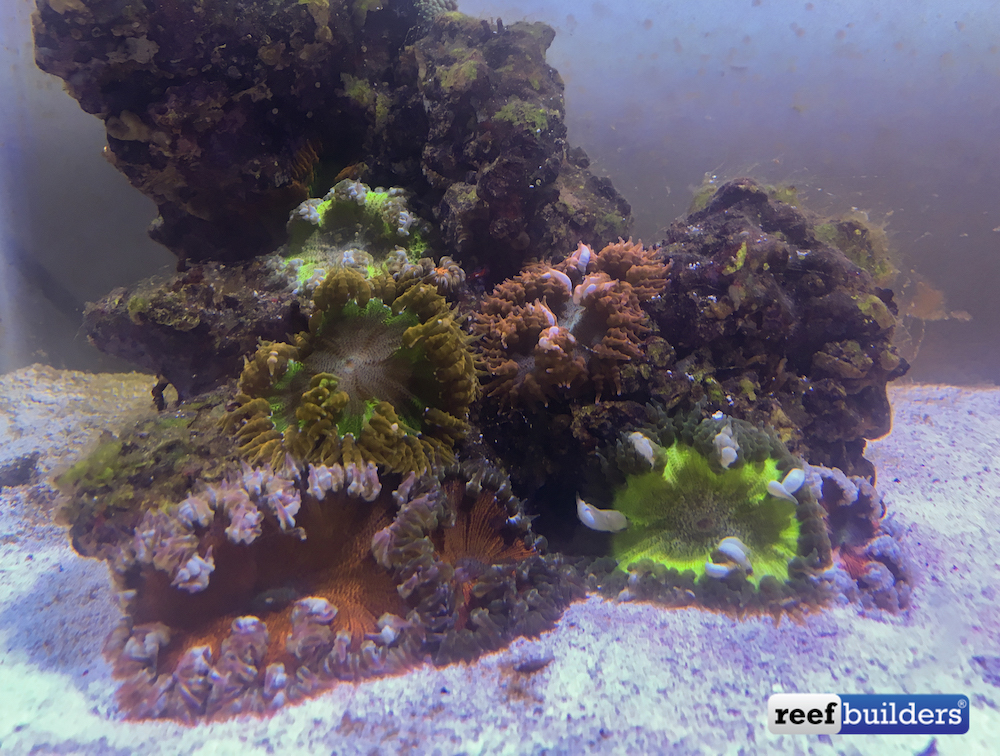
Feeding
P. crucifer is photosynthetic but does benefit from regular feedings. I offered mine mysid shrimp or small chunks of chopped meaty seafoods about once per week, and they seemed to do quite well on that regimen.
What’s your experience with the flower anemone?
Of course, this is just a bare-bones profile of this little Caribbean beauty. We’d love to hear about others’ experiences with this species. Let us know in the comment section below.
*Note: While I refer to Phymanthus crucifer throughout this post, there are several other species within the Phymanthus genus. I don’t know which, if any, of its congeners may be collected for our hobby and sold under the same name.



